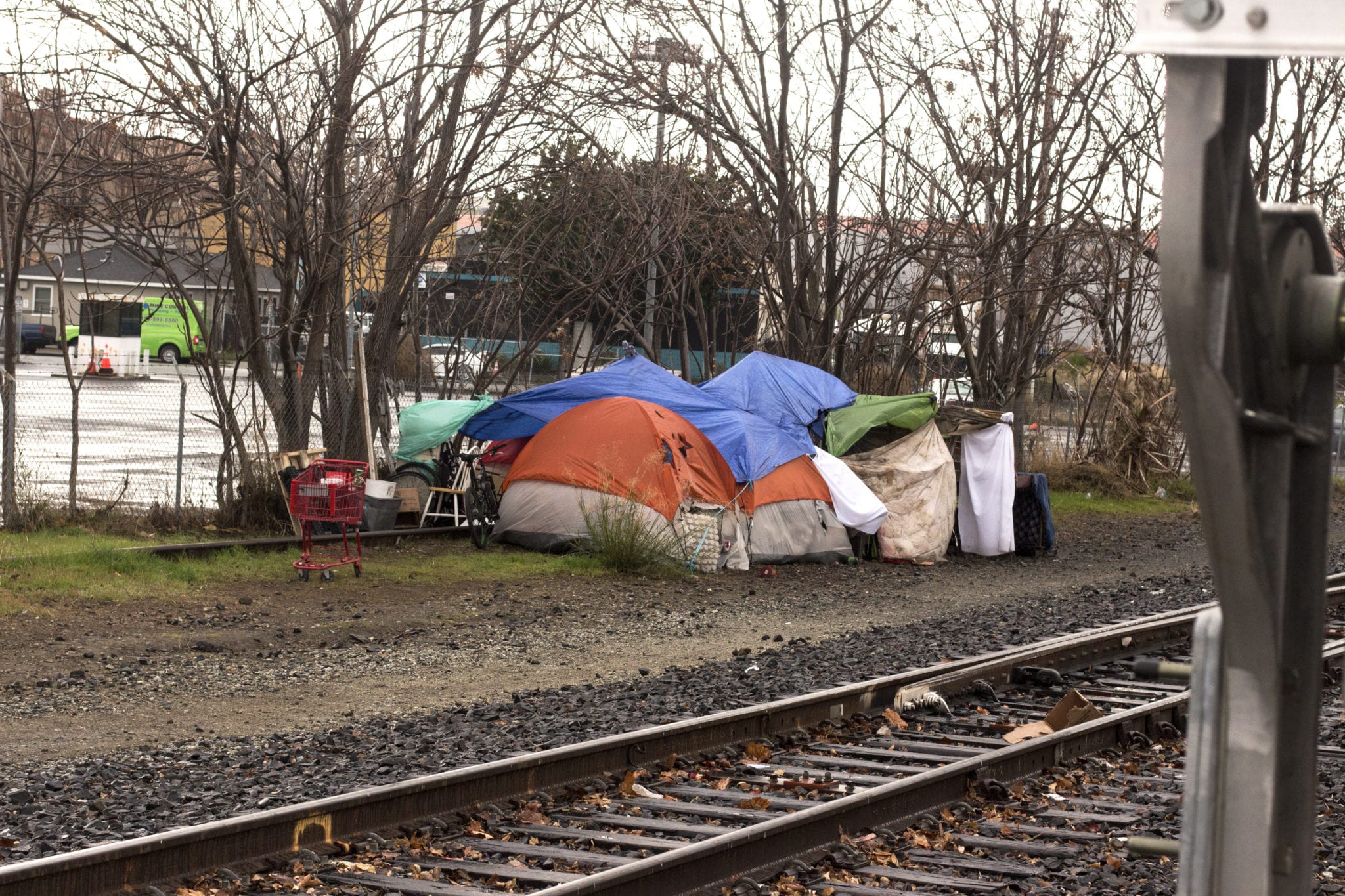Santa Clara County homelessness numbers show improvement

Homelessness is continuing to improve in Santa Clara County, according to data released Thursday, with 6,000 people housed since January 2020 and a decline in the number of people seeking help for the first time.
The new numbers suggest the county’s beefed-up efforts to get people off the streets, and prevent them from ending up there in the first place, are working, according to county officials. But the region has a long way to go to meet its goal of housing 20,000 people by 2025. And large homeless encampments, including along the Guadalupe River Trail in San Jose, continue to shine a spotlight on the crushing magnitude of the crisis.
In 2019, the county counted 4,771 unhoused people who reached out for services for the first time. Last year, that number dropped to 3,172 — a 33% reduction. But even as that number shrinks, it’s still outpacing the number of homeless people who find housing.
Two years ago, for every homeless person who secured housed, another two or three became newly homeless. Now, for every two who find housing, another three become homeless.
“So it’s getting better,” said Jennifer Loving, CEO of Destination: Home. “But it’s still upside down.”
The numbers released Thursday represent the only recent data available on homelessness in Santa Clara County. The county, like many others in the state, delayed its federally mandated homeless census twice during the pandemic. The census, during which volunteers tally every unhoused person they see during a single night, is set to take place next week. The last one, done in 2019, tallied 9,706 people living on the street and in shelters — the highest number in over a decade.
As the COVID-19 crisis swelled in 2020 and homeless encampments grew throughout the Bay Area, Loving and other Santa Clara County leaders unveiled a five-year Community Plan to End Homelessness. Last summer, they announced promising progress — nearly 5,000 people were housed, new homelessness was down 29% and the county was on the way to meeting its goals, they said.
It’s unclear what, exactly, led to the drop in the number of people becoming homeless. At the time, Loving worried progress would be erased once COVID eviction bans expired. Many of those protections ended in September, and the last are expiring in April, even as the state struggles to fund all of its requests for rental assistance.
But so far, new homelessness has continued to drop, according to the county’s numbers. The county also has ramped up its homelessness prevention system, which provides cash aid to help struggling tenants pay rent. That program went from serving 1,540 people in 2019, to 2,140 people last year.
The county also increased its shelter and temporary housing capacity from 1,882 beds in 2019 to 2,227 beds last year.
“This report has shown that the County has made great strides in making progress toward the Community Plan to End Homelessness goals,” Santa Clara County Supervisor Otto Lee wrote in a statement, “but we must continue to focus our energies on addressing the root causes of homelessness.”
Experts agree those root causes include a lack of low-cost housing. The county also is making progress in building permanent, affordable housing, with 830 new homes in nine developments funded by the Measure A housing bond now open. Eleven more projects are under construction, with seven set to open this year. Funding for another six recently was approved by the board of supervisors.
The system is working, Loving said, but its capacity is not nearly big enough. Expanding affordable housing options enough to make a noticeable dent in Santa Clara County’s homelessness crisis will require significant federal help. And so far, she said, that’s been lacking.
The county asked the federal government for 11,000 emergency housing vouchers during the pandemic, and received just 1,031, Loving said. Despite growing need, Santa Clara County has seen just a 4% increase in baseline federal funding for affordable housing and rental assistance over the last 20 years, according to Preston Prince, executive director of the county’s Housing Authority.
“We don’t have enough money,” Loving said. “But the money exists. The Feds are not doing their jobs and they have been failing the state of California for as long as I’ve been doing this work.”

